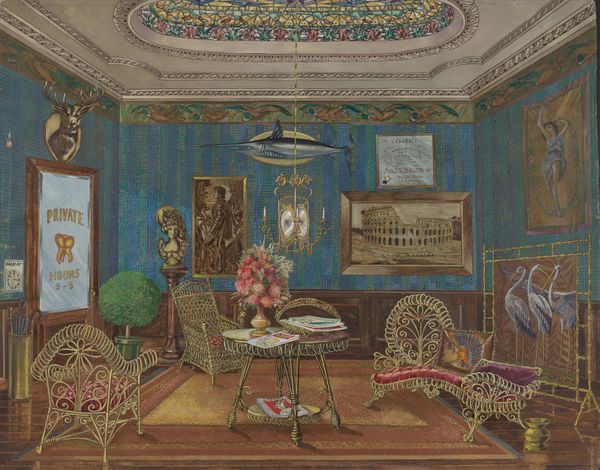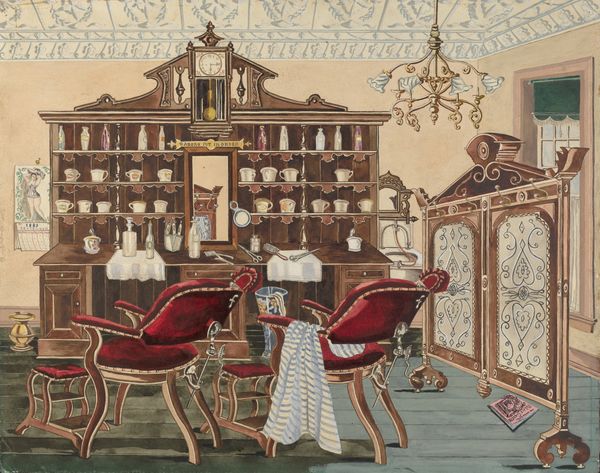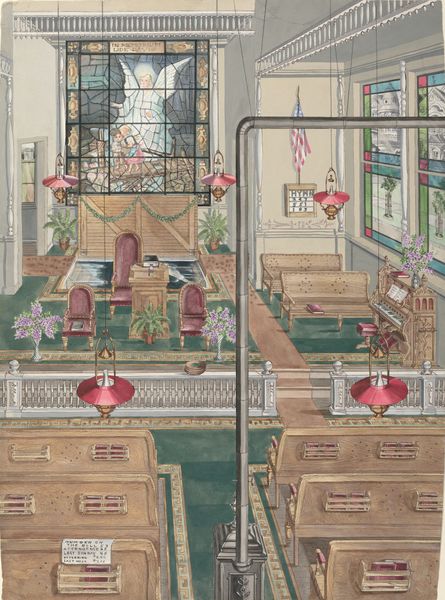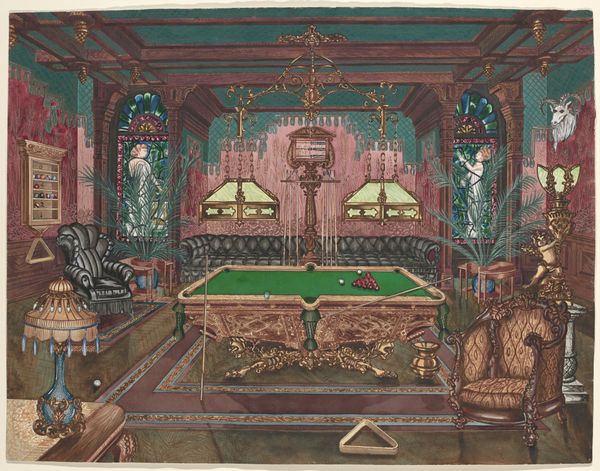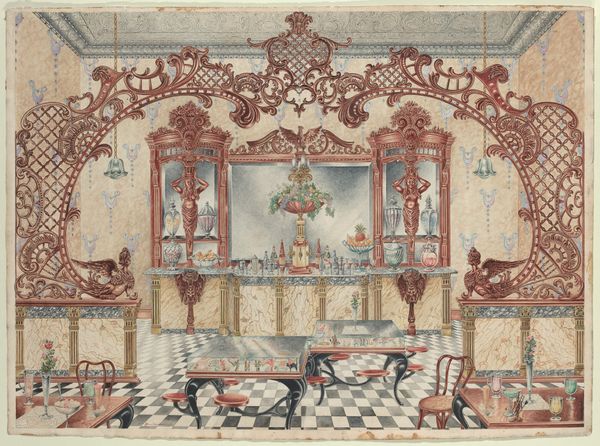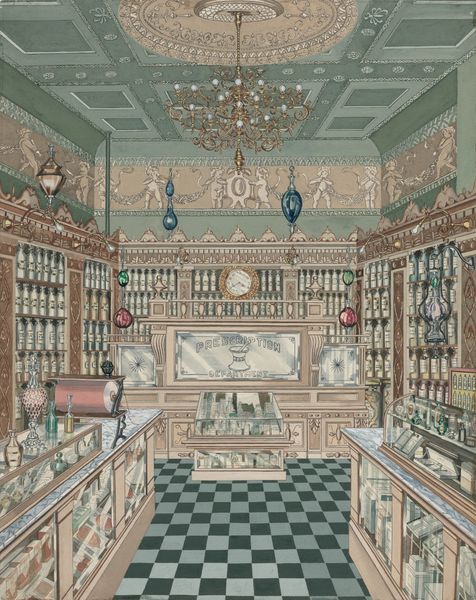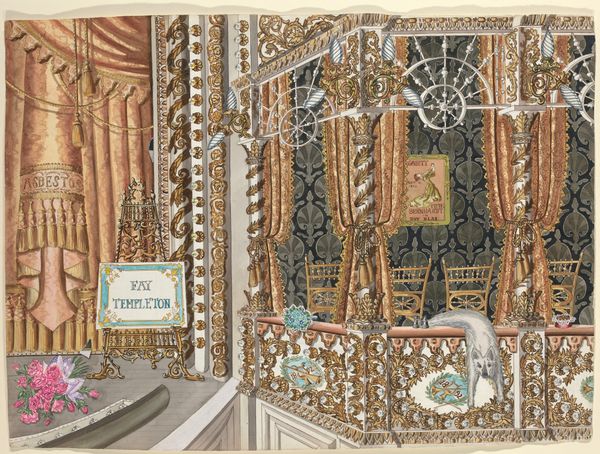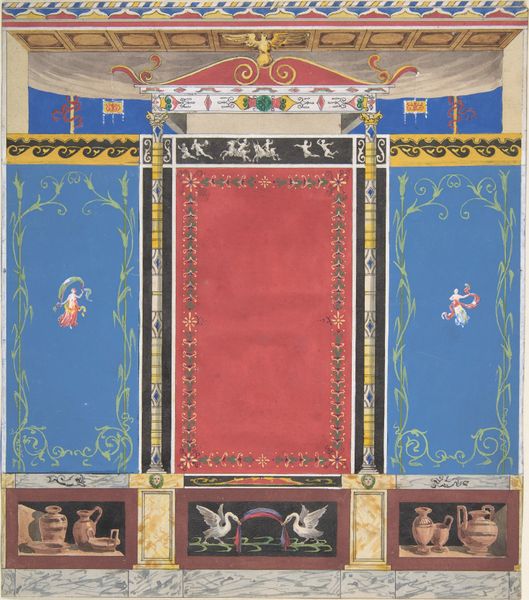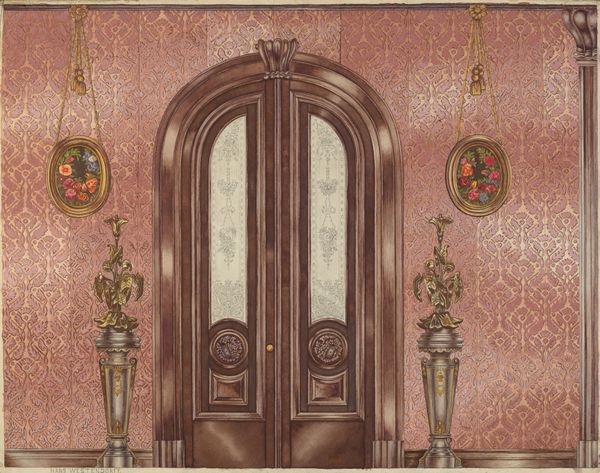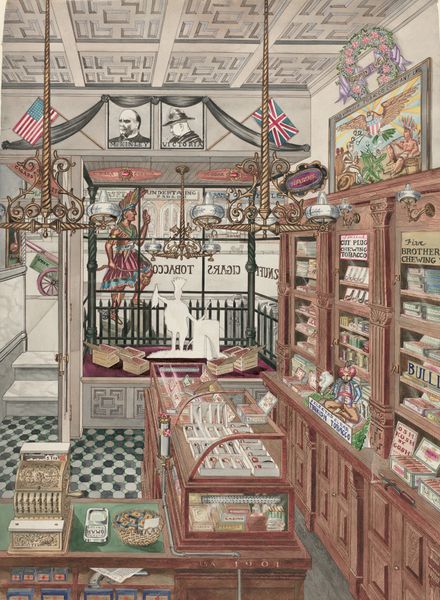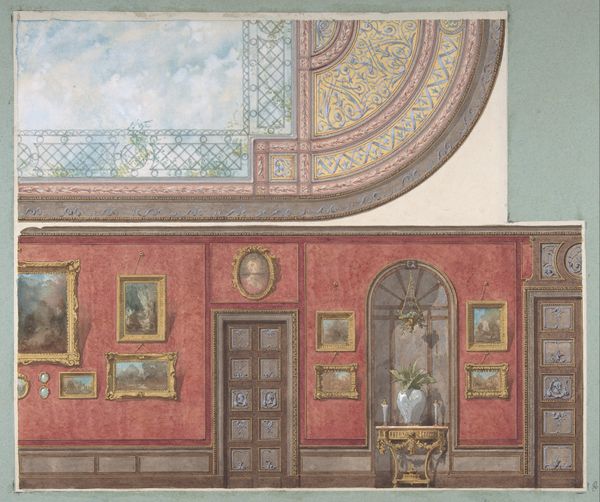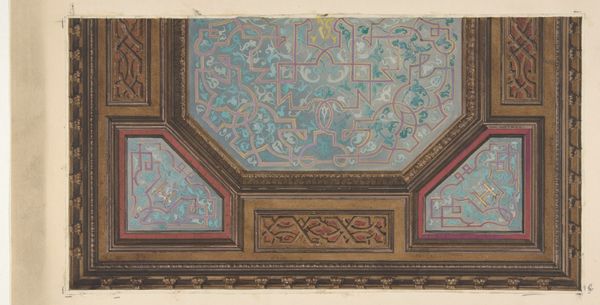
Dimensions: overall: 46 x 56.9 cm (18 1/8 x 22 3/8 in.)
Copyright: National Gallery of Art: CC0 1.0
Editor: Here we have Perkins Harnly's "Bar," created sometime between 1935 and 1942. It seems to be a drawing or painting... perhaps a study of a real place? There's almost a stage-set quality to the whole composition that strikes me. What do you see in this piece, especially from a historical viewpoint? Curator: What grabs me is how it serves as a snapshot of cultural aspiration, but also, perhaps, anxiety. Harnly is capturing, or inventing, a space intended for public consumption, yet the aesthetic harkens back to Baroque excess with its lush details and playful ceiling murals. Editor: An anxiety? What do you mean? Curator: Well, think about the historical context. The late 30s and early 40s – Prohibition had just ended, and these spaces became newly legal social hubs. However, anxieties about public behaviour, gender roles, and class were also in flux. Did Harnly visit the setting or invent it in response to this context? Editor: So the image of leisure is also tied to societal tensions… that makes me see it in a different light. Curator: Precisely. We might even consider this a kind of social document disguised as a genre scene. The architecture practically shouts a carefully crafted image, designed for the public eye, to attract new customers. Editor: I hadn't thought of that. Looking closer now, it's fascinating how much the decor screams “respectability" through overt displays of Baroque wealth. I guess you have to remember that paintings such as this reflect, even reinforce, cultural attitudes. Curator: Exactly. Art doesn't exist in a vacuum. Exploring those contextual relationships is key to appreciating a work’s complete story.
Comments
No comments
Be the first to comment and join the conversation on the ultimate creative platform.
